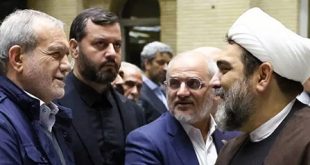The Israeli Airstrike and Nasrallah’s Death
On Friday, an Israeli airstrike targeted Nasrallah’s stronghold in the southern suburbs of Beirut. Hezbollah’s official statement referred to Nasrallah as the “master of resistance” and a “righteous servant” who died as a martyr. The airstrike marked a significant escalation in the already tense conflict between Hezbollah and Israel, raising questions about what comes next for both sides.
Israel has long viewed Hezbollah as one of its most formidable adversaries. Since its inception in the 1980s, Hezbollah has grown into a powerful paramilitary organization with a sophisticated arsenal that includes tens of thousands of rockets and missiles capable of reaching deep into Israeli territory. Nasrallah’s leadership saw several confrontations with Israel, most notably the 2006 Lebanon War, which resulted in widespread destruction but ended in what many in Hezbollah considered a victory.
The Israeli airstrike that killed Nasrallah could have been motivated by several factors. For years, Israeli intelligence has worked to monitor Hezbollah’s leadership, and Nasrallah himself rarely appeared in public due to fears of assassination. The airstrike on the southern suburbs of Beirut likely required extensive planning and intelligence gathering. Nasrallah’s death signals Israel’s commitment to eliminating key figures in Hezbollah’s leadership as part of its broader strategy to weaken the organization.

